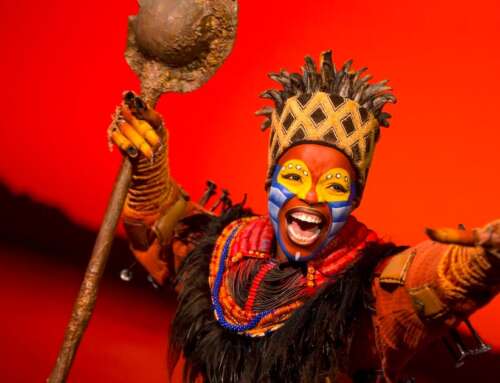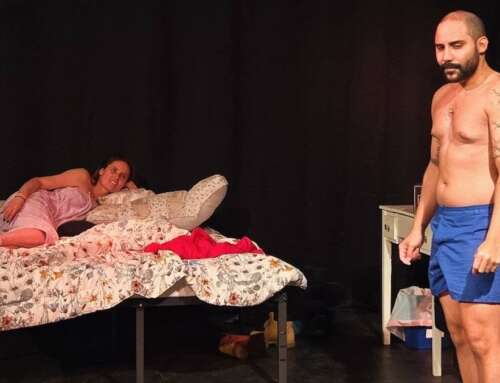Jessica Jackson’s play pokes fun at the game while using its trappings as the set and the house
Golf carts usually don’t take part in theatre. And it’s not because they don’t have performing aspirations, but rather because they’re usually reserved for the use of presidents made claustrophobic by the Oval Office, or for members of gated communities hustling to an impromptu bingo session.
Yet, due to COVID-19, the humble golf cart has made its theatrical debut (well, probably). And what a debut it was.
The Catamounts is a theatre company that defines itself by productions that think outside of the normal theatrical sphere. That’s a necessity if one hopes to attend a live theatre production during a pandemic. The Rough, written and directed by Jessica Jackson (with the writing assisted by the ensemble), is a play for anyone who hopes to enjoy an outing in a world where such experiences have all but disappeared.
Upon arrival, guests are gifted earpieces and receivers that are playing music before the show, but which then become an integral part of the production. Called bonephones, the earpieces conduct through one’s bones rather than through the outer eardrum. This means that the enjoyer of The Rough is not subjected to the worries of excessive earwax provided by previous users.
Guests are then assigned one golf cart to be part of a parade, parked and ready to drive the front nine holes of Legacy Ridge golf course in Westminster. And yes, the golf cart is what we might hitherto refer to as “the house” — the place where the audience sits to watch the show with social distancing to spare.
This reviewer was quite enthused to be outside on a beautiful summer evening, when distant mountains cradled an orange, setting sun, and the clouds overhead sported deepening colors as the evening progressed. This reviewer’s wife, however, had some anxiety about driving a golf cart, as her inconsiderate husband asserted that driving such a vehicle is a dangerous and difficult undertaking. She quickly got a hang of it, though, as anyone would, and was soon commenting on what a knack she had for navigating the cart paths.
A Scottish angle, of course
The play begins with a Scotsman — dressed in traditional Highlands garb wonderfully fitted by costume designer Nicole Watts, and sporting a beard that inspired envy in all those less hirsute — walking over the first tee box to the west, waving as he moved as one would over a Scottish moor.
This performance by Brian Kusic as the Scotsman is the best part of a tremendous outing. The guide through the entire production, Kusic is the comic relief who never breaks character, even while providing directions on navigating the cart path or waving to members of the public looking on from their balconies.
Kusic does, however, break the fourth wall with quips about the virtues of his Scottish accent — “Did you hear how I said that? Like a legitimate Scotsman I did.” And he chides the audience for forgetting their golf clubs, letting them know that they would have to go find a sturdy oak “about arm thick” to make clubs, and then they’d have to kill a goose and a rabbit to get the materials to make a ball.
Following this Scotsman through the front nine, guests are treated to several vignettes put on by actors donning many hats. All, appropriate for the setting, have some connection to golf. Some stories celebrate the beauty of the sport. Yet there is a thread, wound through each, that critiques the pastime, causing one to wonder if the City of Westminster had an idea of the production’s material before allowing their property to be used for the show.
A Goddess of Golf
The storyline of the Scotsman includes chasing a goddess seen running across the links. This is Paganica, who created golf (Kebrina Josefina De Jesús.) Audience members are taught about the origins of the game and how it began as an everyman activity.
Actor Sam Gilstrap successfully portrays an adult teaching a group of children — children who the audience only hears through the bonephones — the basics of different clubs and how anyone can play golf. He also talks about his Navajo heritage and the friction that heritage causes in a sport that, while so beautiful, is also rife with racism, elitism, and the mutilation of the natural environment.
Where the production seemed to lose some of its momentum was in the vignettes not so tightly tied to the golf theme. Some stretched far to maintain their link, and it sometimes felt like audience members were being treated to political statements thinly camouflaged as stories.
Overall, though, The Rough is a wonderful play, and a highly original concept. Where else could one enjoy a song — sung beautifully by Maggie Tisdale — about a woman’s lover leaving her because she beat him in a golf match, performed in an underpass tunnel of a golf course? And The Rough offers a valuable perspective on a game so prevalent in our society — especially in the suburbs of eastern Colorado — about the wedge that golf drives between the classes and its destruction of the natural world. These perspectives in The Rough can just sometimes be hit rather on the nose.
I’m fortunate to have seen a number of productions by The Catamounts, and The Rough is so far my favorite and comes with a strong recommendation. Such an opportunity to enjoy fresh air and good theatre while on the move does not come about often.
And, should The Catamounts ever decide to put on a one-man production of Brian Kusic as a Scotsman berating the audience for their incompetence, I’ll be there in the front row. Or the front nine. Or whatever.
Tim Drugan graduated from the University of New Hampshire with a degree in English/Journalism. His writing, about everything from presidential rallies to soft robotics, has appeared in newspapers, literary magazines, online magazines, and normal, boring magazines. He hosts a comedy fiction podcast titled Tim Drugan's Story Time. Find out more at timdrugan.com.








Leave A Comment